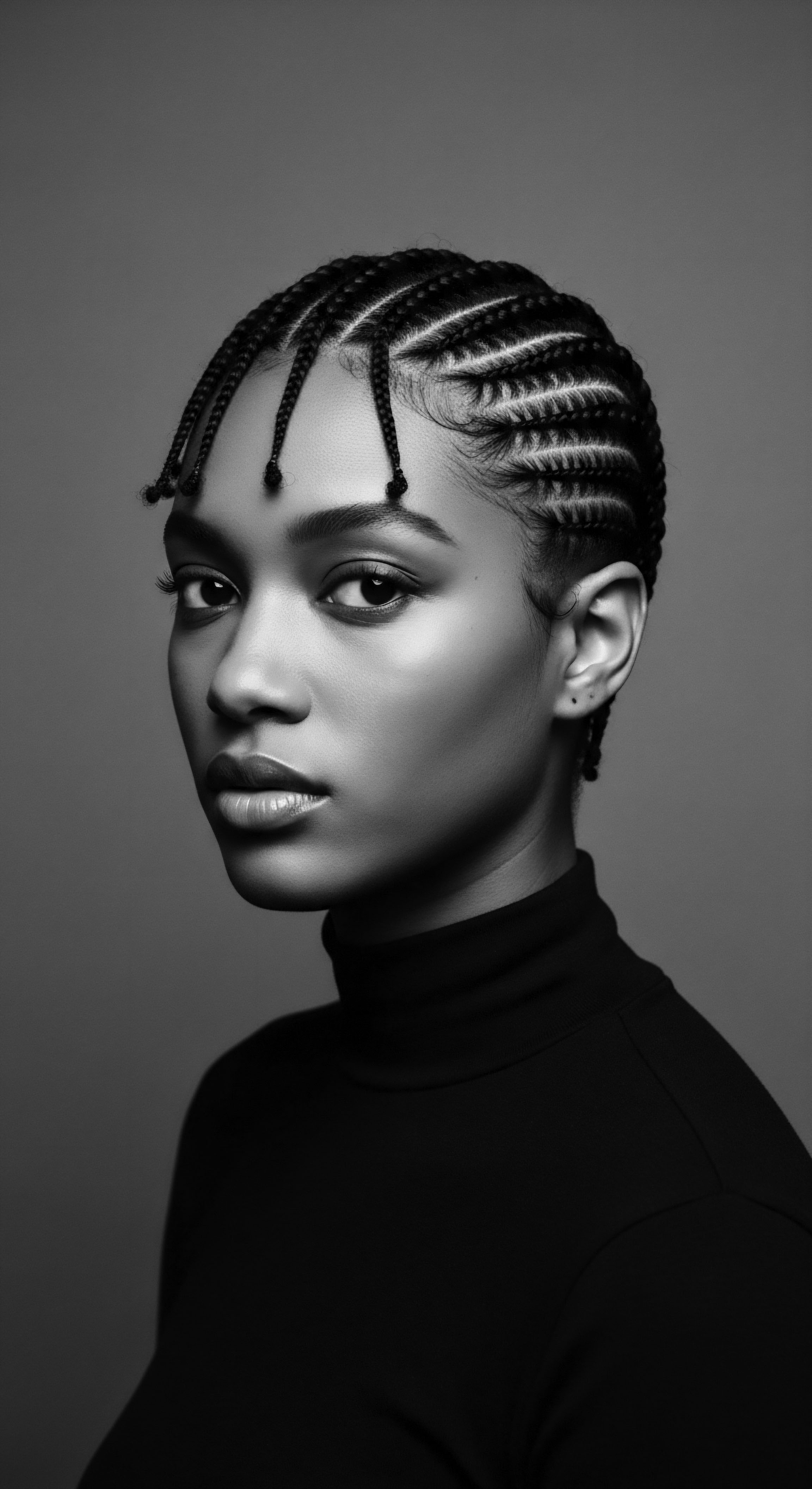
Roots
For generations, the stories of our coils and curves, our crowns of kinky, wavy, and spiraled strands, have been intertwined with the very earth that sustained our ancestors. This is not a recent understanding, nor a scientific novelty, but a wisdom steeped in textured hair heritage . We seek to understand the scientific compositions in shea butter that protect textured hair from environmental elements, yet our journey commences not in a laboratory, but in the sun-drenched savannahs of West Africa, where the magnificent shea tree, Vitellaria paradoxa, stands as a living monument to enduring care.
This connection extends beyond simple utility; it is a profound resonance with ancestral knowledge, a living archive of remedies passed from hand to hand, generation to generation. The scientific components within shea butter are not abstract chemical names alone; they are the validation of practices held sacred, the deeper language of an inherited tradition.

Ancestral Wisdom and Hair Structure
The textured hair, often characterized by its elliptical cross-section and unique helical twists, possesses a natural inclination toward dryness. This structural reality, quite unlike straighter hair forms, creates vulnerabilities to external forces. Each bend and curve in a coiled strand presents a point where the outer cuticle layers, those protective scales that usually lie flat, can lift.
This lifting exposes the hair’s delicate inner cortex, allowing vital moisture to escape and making the strand susceptible to environmental aggressors. Our foremothers understood this intuitive truth about dryness, perhaps without microscopes or chemical formulas, recognizing the hair’s need for consistent, deep conditioning.
The story of shea butter and textured hair is one of inherited wisdom, where ancestral practices intuitively addressed the very vulnerabilities science now illuminates.
The historical application of emollients, specifically shea butter, served as a brilliant, prescient answer to these inherent structural characteristics. Consider the environment ❉ the West African climate, with its intense sun, varying humidity, and often dry, dusty winds, presented formidable challenges to hair integrity. Without the array of modern products, how did these communities maintain the health and vitality of their hair? The answer rests in the generous application of materials like shea butter, a practice rooted in daily life and ceremonial rites.
This rich butter forms a protective lipid film, sealing the cuticle and minimizing moisture loss from the hair shaft. It effectively created a shield, a second skin for the hair, allowing it to maintain its natural suppleness and strength despite the elements.
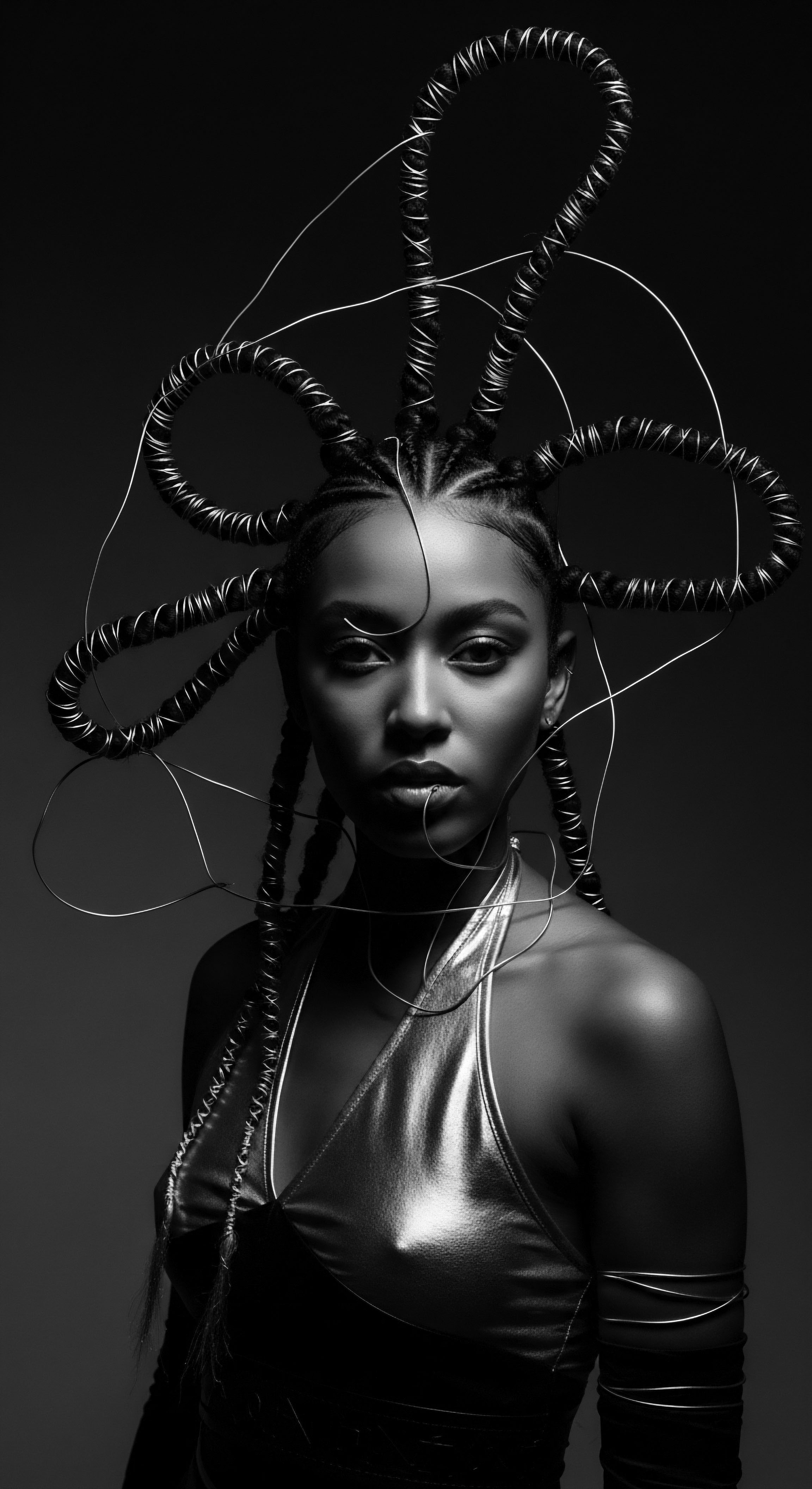
What Components Shield Hair?
At its heart, shea butter is a complex botanical gift, a blend of compounds that synergistically protect and nourish. Its ability to shield textured hair from environmental elements rests significantly in its rich composition of fatty acids and a particularly high concentration of unsaponifiable matter.
- Fatty Acids ❉ These are the core of shea butter’s moisturizing capabilities. Palmitic, stearic, oleic, and linoleic acids constitute the majority of its lipid profile. Stearic and oleic acids, making up 85-90% of the fatty acids, are particularly instrumental. These lipids mirror the natural oils produced by our scalp, allowing shea butter to readily integrate with the hair’s existing lipid layers. They soften hair and help seal the cuticle, which is especially important for coiled hair, which tends to have a more open cuticle structure.
- Unsaponifiable Matter ❉ This is where shea butter truly sets itself apart. Unlike most vegetable oils, which contain around 1% unsaponifiables, shea butter boasts up to 10% or more. This fraction is a treasure chest of bioactive compounds, including triterpenes, tocopherols (Vitamin E), phytosterols, and phenolic compounds.
These components collaborate. The fatty acids provide the fundamental barrier and moisture, while the unsaponifiables deliver specialized environmental protection. This multi-layered approach reflects a deep, inherent understanding of hair’s needs, passed down through generations who intuitively chose this golden butter for its protective attributes.
The protective attributes of shea butter for textured hair are not merely anecdotal; they are increasingly supported by scientific observation. The very physical properties of shea butter—its semi-solid consistency at room temperature—lend themselves to forming a substantial yet pliable coating on the hair strand. This physical barrier is a primary line of defense. When applied, it wraps around the hair shaft, helping to lay down the raised cuticle cells, thereby reducing porosity and minimizing the entry of environmental pollutants or the exit of internal moisture.

Understanding Environmental Influences on Textured Hair?
Textured hair often faces heightened susceptibility to environmental stressors due to its unique architectural design. The spiral shape of the hair follicle and the resulting coiling of the hair fiber create inherent challenges in lipid distribution and moisture retention. Natural sebum, produced by the scalp, struggles to travel down the curves and coils, leaving the ends of the hair particularly vulnerable to dryness. This predisposes textured hair to environmental damage from elements such as solar radiation, humidity fluctuations, and atmospheric pollutants.
Solar Radiation ❉ Ultraviolet (UV) radiation from the sun can degrade the keratin protein structure of hair, leading to weakened strands, color fade, and increased porosity. Textured hair, with its exposed cuticle layers, can be particularly susceptible to this photo-damage. The triterpene esters, such as Cinnamic Acid, within shea butter are known to absorb UV-B rays, providing a natural, albeit mild, sunscreen effect for the hair.
Humidity and Moisture Fluctuations ❉ In humid conditions, porous textured hair can absorb excess moisture from the air, causing frizz and swelling, which can lift cuticles further. In dry conditions, the hair rapidly loses its internal moisture to the environment. Shea butter acts as an occlusive agent, forming a lipid film that slows down transepidermal water loss from the hair shaft, thus helping to regulate the hair’s moisture content regardless of external humidity levels. This provides a stabilizing effect, preventing both excessive water absorption and severe dehydration.
Pollution and Atmospheric Toxins ❉ Modern environments expose hair to various pollutants, including particulate matter and free radicals. These can accumulate on the hair shaft, leading to oxidative stress and dullness. The phenolic compounds and tocopherols (Vitamin E) in shea butter are powerful antioxidants that neutralize these free radicals, offering a layer of protection against environmental toxins and maintaining hair vitality.
The inherent architecture of textured hair, with its unique bends and twists, means that the outer cuticular layer is often disrupted, leaving the internal cortex less protected. This naturally occurring characteristic increases the hair’s surface area exposure to external elements and reduces its ability to retain moisture. Shea butter’s fatty acid composition allows it to coat the hair fiber, effectively smoothing these lifted cuticles and creating a barrier that mitigates moisture loss and shields against penetration by pollutants. This protective action is crucial for preserving the integrity of the hair’s protein structure, which is particularly vulnerable in coiled hair types.
One specific historical example that powerfully illustrates the deep connection between shea butter’s scientific components and textured hair heritage lies in the practices of the Women of the Sahel Region. For centuries, across communities in nations like Ghana, Burkina Faso, and Mali, shea butter has been meticulously extracted and applied to hair not just for beauty, but for survival against the harsh desert and savanna climates. An ethnobotanical study on traditional plant cosmetics in Northern Ghana identified Vitellaria paradoxa (shea butter) as the most used plant by females for smoothening the skin and enhancing hair growth. This long-standing, widespread practice validates an intuitive understanding of the butter’s emollient and protective qualities.
The women, working under intense sun and wind, relied on shea butter to shield their hair from drying out, preventing breakage, and maintaining health, thereby ensuring their hair could be styled into intricate, culturally significant forms that also served protective functions. This demonstrates a profound, long-standing empirical application of shea butter’s protective scientific components against environmental elements, deeply woven into the fabric of daily life and communal identity.
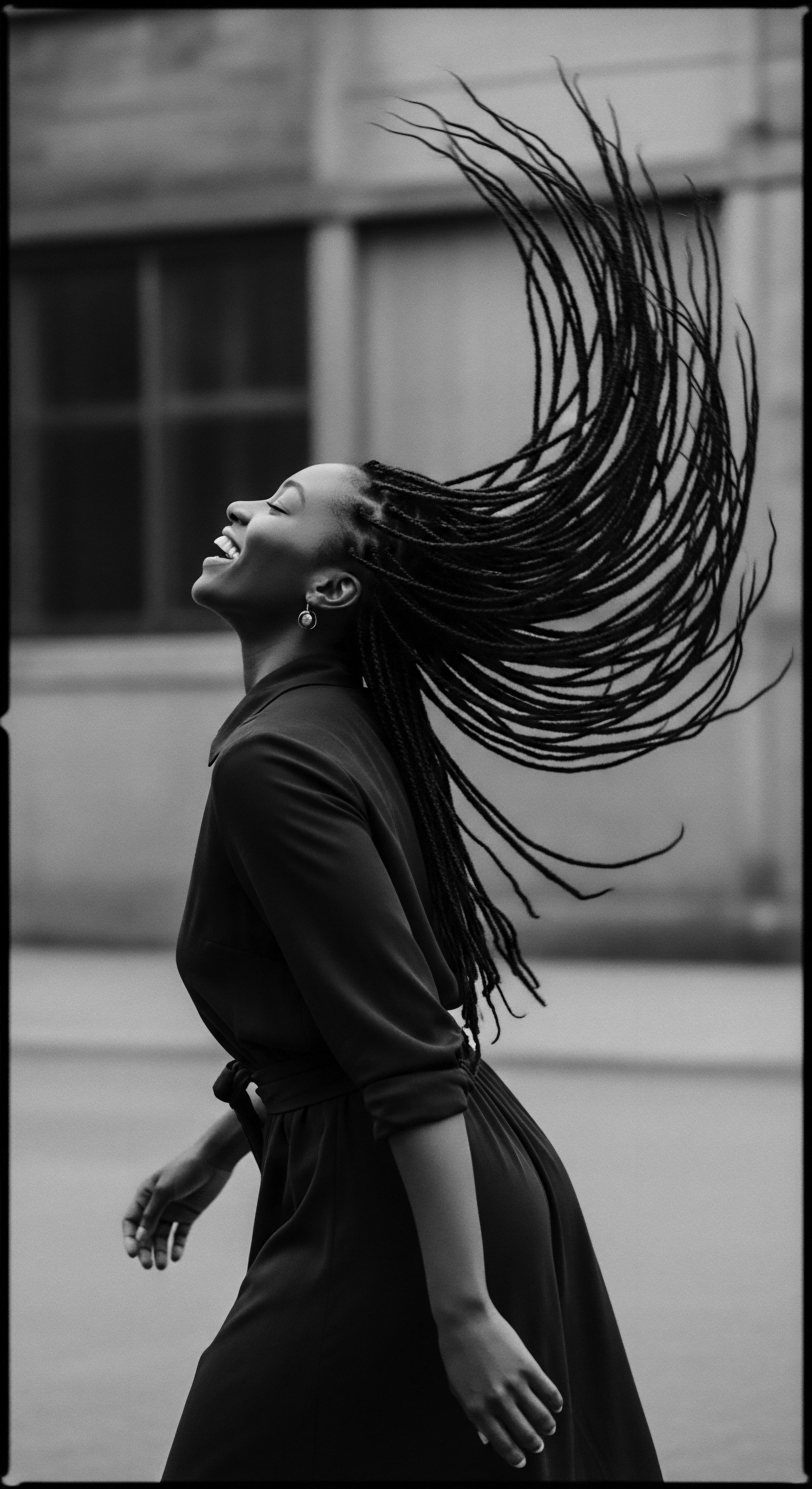
Ritual
In many West African societies, the act of hair care extends far beyond mere cosmetic maintenance; it is a profound ritual, a transfer of wisdom, and a powerful expression of identity. The purposeful application of shea butter into hair, whether for daily dressing or ceremonial preparation, embodies this tradition. It represents a living dialogue between the natural world and human needs, a testament to inherited ingenuity. This section will delve into how the components of shea butter have shaped, and continue to shape, the art and science of textured hair styling, reflecting an unbroken lineage of care.
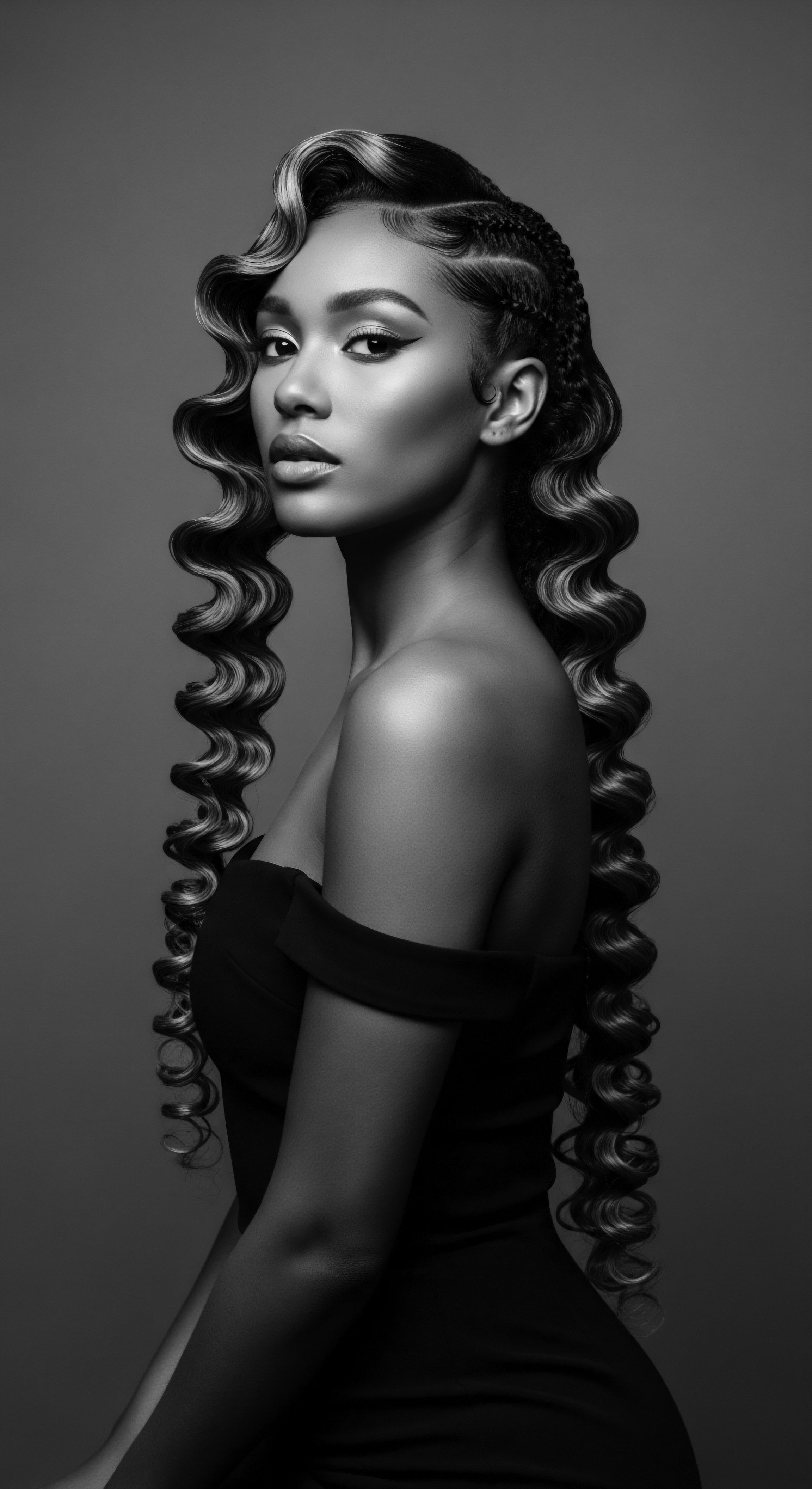
Protecting Strands in Ancestral Styling?
The techniques of traditional styling for textured hair, often protective in nature, relied heavily on emollients like shea butter. Consider styles such as intricate braids, twists, and cornrows, which served not only as markers of identity, status, or age, but also to minimize manipulation and exposure to environmental elements. Shea butter provided the essential lubrication and sealing necessary for these styles to endure.
Its fatty acids, particularly stearic and oleic acids, create a smooth surface on the hair shaft, reducing friction during braiding and twisting, thereby preventing mechanical damage and breakage. This lubrication allows the hair to be manipulated into structured forms without undue stress, which is particularly significant for coiled hair, prone to knots and tangles due to its natural curvature.
The unsaponifiable lipids within shea butter reinforce this protective action. Triterpenes, for instance, contribute to the butter’s softening capabilities, making hair more pliable and less resistant to styling. This improved pliability is vital for creating and maintaining the tightness required for many protective styles, ensuring they remain intact against wind, dust, and daily activity. The butter’s ability to coat the hair also offers a barrier against the absorption of excess environmental moisture, which could otherwise lead to frizz and unraveling of carefully constructed styles.
Ancestral hands, guided by generations of observation, intuitively understood that shea butter provided the essential pliability and protection for enduring, intricate hair artistry.
In many West African communities, shea butter was not simply rubbed onto the hair; it was often warmed, sometimes mixed with other herbs or oils, and worked through the hair in a deliberate, methodical manner. This warming would lower its melting point, allowing the butter to spread more evenly and penetrate the hair shaft more effectively. This traditional preparation method speaks to an empirical understanding of how to best activate and distribute the butter’s beneficial compounds, maximizing its emollient and sealing properties.
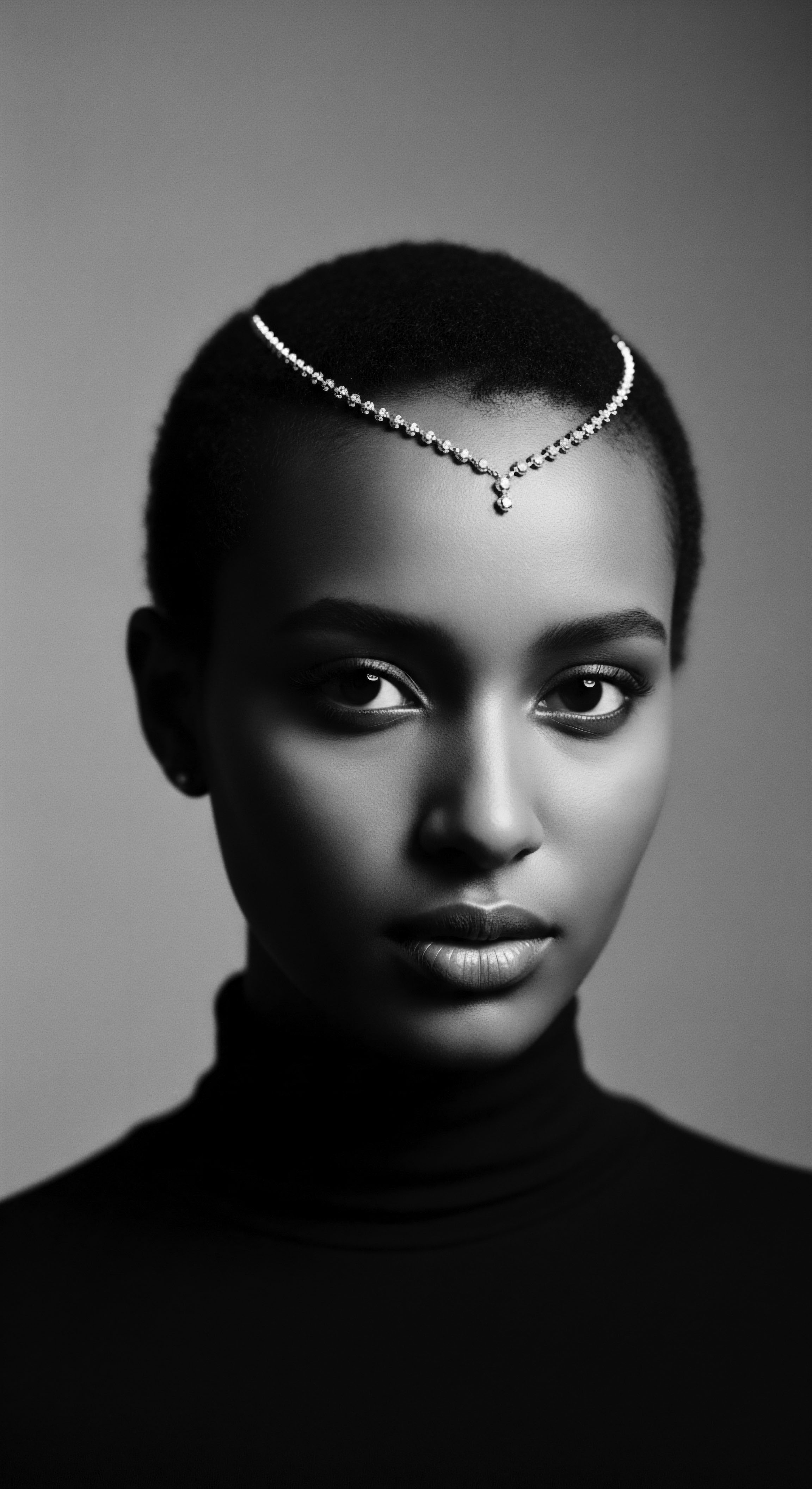
Shea Butter’s Role in Natural Definition?
Natural styling techniques, aimed at enhancing curl or coil definition, gain immensely from shea butter’s properties. Textured hair, by its very nature, benefits from products that reduce frizz and promote clump formation. The lipid-rich composition of shea butter acts as a weight, gently encouraging curls to group together, while simultaneously sealing the cuticle to reduce the absorption of humidity, which can otherwise cause the hair to expand and lose its shape.
The Vitamins A and E, present in shea butter, contribute beyond mere moisturization. Vitamin E, a known antioxidant, guards against oxidative damage from environmental stressors, preserving the integrity of the hair shaft and allowing natural curl patterns to remain defined and resilient. Vitamin A contributes to overall scalp health, which directly impacts the quality of the growing hair strand.
A healthy scalp environment supports robust hair fiber formation, which in turn influences the hair’s ability to maintain its defined coil. Without this deep, supportive care, the environmental elements could easily compromise natural definition, leading to dull, frizzy, and less vibrant hair.
The journey of shea butter from ancestral practice to a modern staple in natural hair routines showcases a seamless validation of traditional methods. For example, the use of shea butter as a pre-shampoo treatment or a leave-in conditioner, common today, mirrors the historical practice of applying it to prepare hair for styling or simply to maintain its moisture balance throughout the day. The persistent efficacy of shea butter in taming frizz and enhancing shine on coiled hair is a direct link to the understanding passed down through generations, long before modern laboratories quantified its components.
| Traditional Practice Daily hair oiling and massages with shea butter |
| Scientific Component(s) & Protective Action Fatty acids (oleic, stearic) create an occlusive barrier; Vitamins A, E (tocopherols) provide antioxidant protection; Triterpenes (cinnamic acid) offer mild UV absorption. These elements collectively shield hair from sun, wind, and dryness. |
| Cultural Link to Heritage Emphasizes preventative care and the belief in fortifying the hair and scalp against daily environmental wear, a testament to enduring ancestral wisdom . |
| Traditional Practice Applying shea butter before intricate braiding or twisting |
| Scientific Component(s) & Protective Action Fatty acids lubricate the hair shaft, reducing friction and breakage during manipulation; Unsaponifiables enhance pliability, allowing for easier, less damaging styling and promoting resilience in complex styles. |
| Cultural Link to Heritage Styling as identity and protection ❉ these elaborate styles were not just aesthetic but served to protect the hair. Shea butter enabled their longevity and preserved the hair's health, connecting to community identity and cultural markers . |
| Traditional Practice Shea butter as a post-wash sealant |
| Scientific Component(s) & Protective Action Lipid film from fatty acids and phytosterols seals the cuticle, locking in moisture and preventing excessive absorption or loss of water in fluctuating humidity. |
| Cultural Link to Heritage Reflects an ancient understanding of moisture retention for coiled hair in diverse climates, preserving hair's inherent moisture to maintain softness and reduce dryness, a practice foundational to hair wellness heritage . |
| Traditional Practice Shea butter bridges time, its inherent compounds serving as the scientific basis for hair care traditions that have protected textured hair for centuries, affirming a profound intergenerational knowledge . |
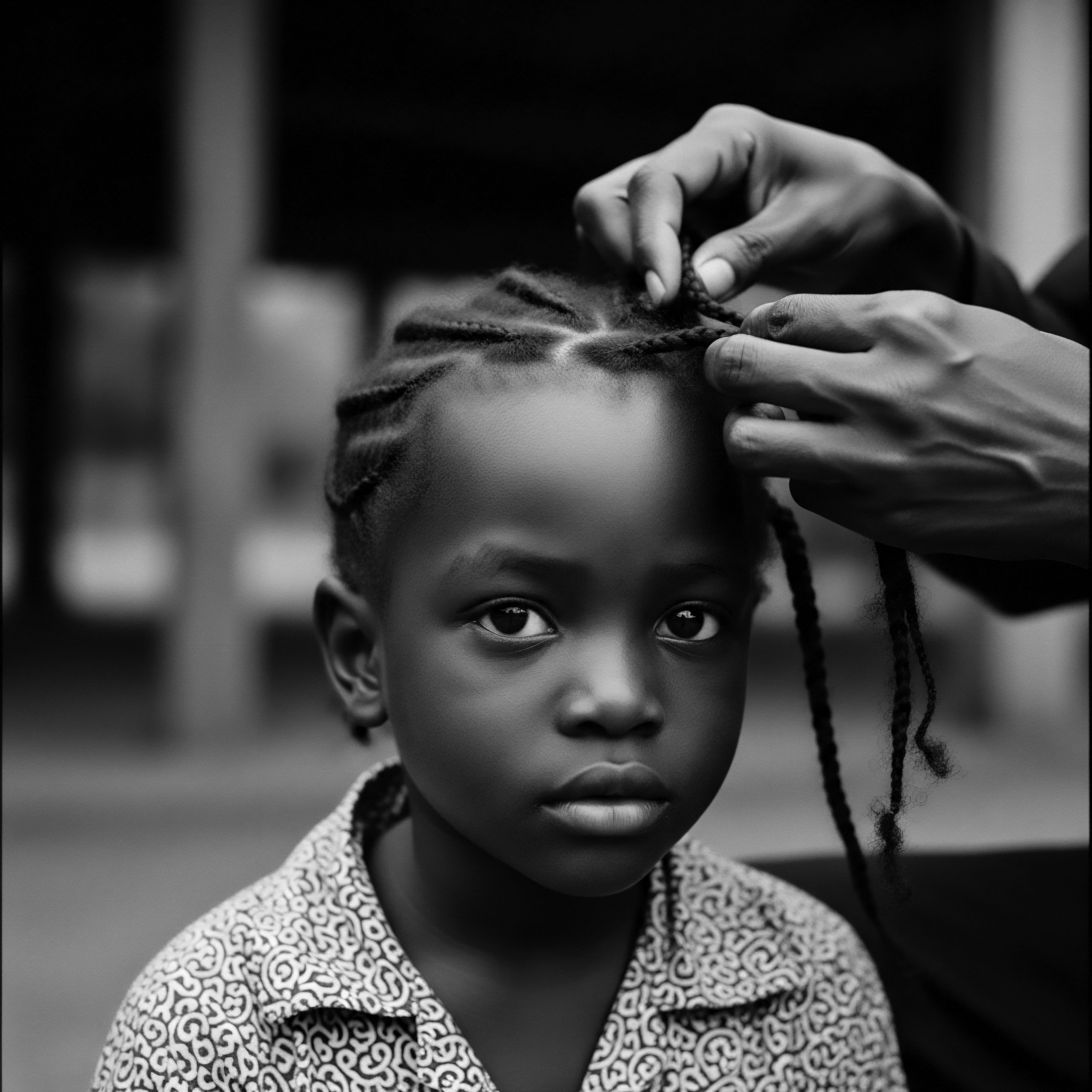
Relay
The journey of understanding shea butter’s profound relationship with textured hair continues, a relay race of knowledge passing from ancient hands to contemporary scientific inquiry. Here, we delve deeper, recognizing that the holistic care of textured hair, deeply rooted in ancestral wisdom, is continuously validated and enriched by modern scientific discourse. This is where elemental biology meets the living traditions of care and community, ensuring that the legacy of textured hair thrives against ever-evolving environmental elements.
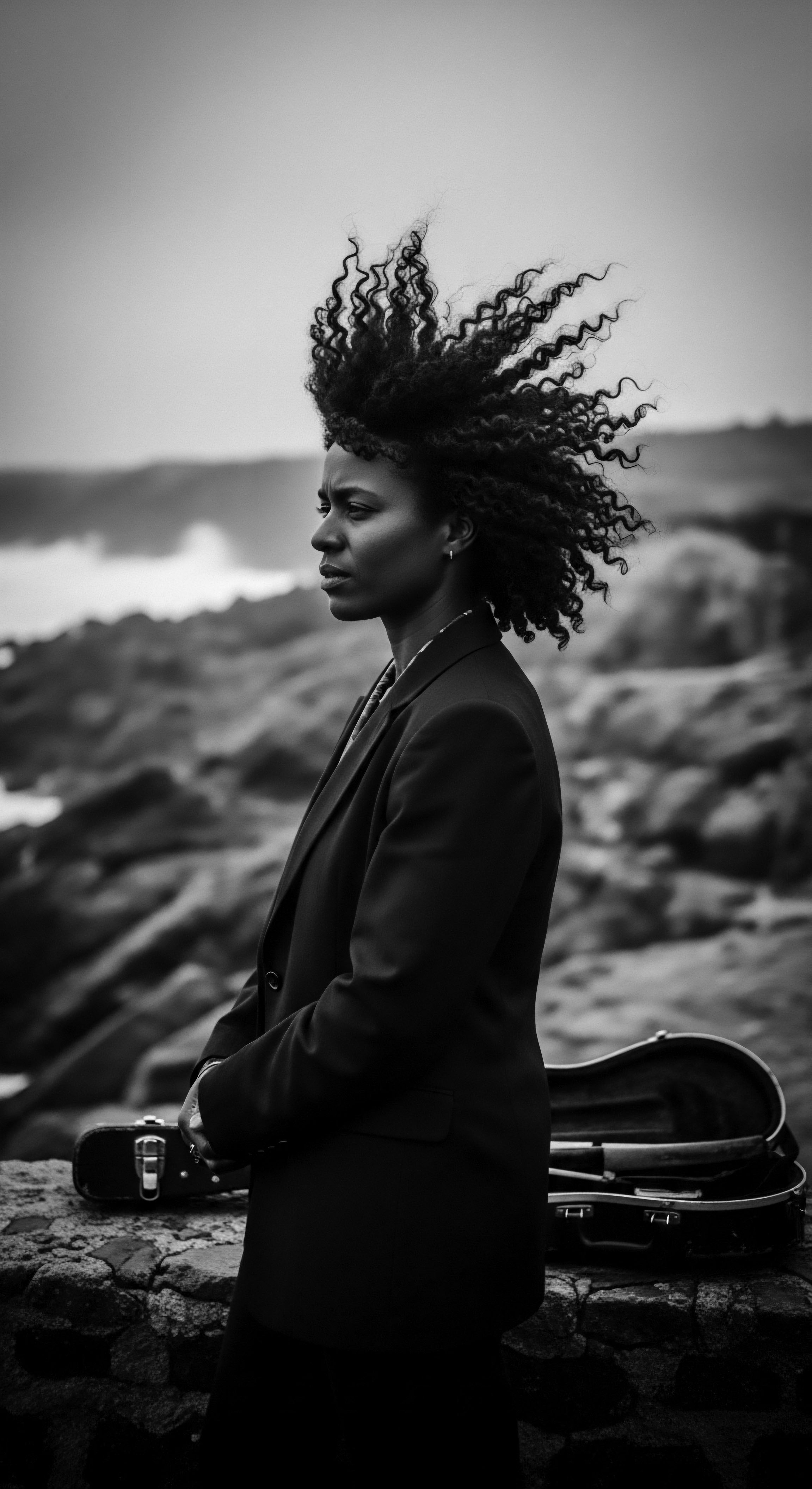
Deepening Protection Against Environmental Stressors?
Shea butter’s protective capacity extends beyond surface-level shielding, addressing the complex interplay of environmental factors that assault textured hair. The high concentrations of Stearic Acid and Oleic Acid, its dominant fatty acids, form a substantial lipid barrier. This barrier is critical. Imagine the hair strand as a series of delicate, overlapping roof shingles.
In textured hair, these ‘shingles’ (cuticles) are more prone to lifting due to the hair’s natural bends, leaving the internal structure vulnerable. Shea butter’s lipids work to flatten and seal these shingles, creating a continuous, hydrophobic layer that repels excess moisture and pollutants, preventing them from penetrating the hair cortex. This action is particularly significant in humid environments, where water absorption can lead to hygral fatigue, a process of repeated swelling and shrinking that weakens the hair fiber over time. By moderating this water exchange, shea butter preserves the hair’s structural integrity.
Beyond this physical barrier, the unsaponifiable components provide active defense. The Triterpene Alcohols, particularly Cinnamic Acid Esters, are noted for their mild UV-absorbing capabilities. While not a standalone sunscreen, their presence offers a foundational layer of defense against solar radiation, which can otherwise lead to protein degradation and oxidative stress in the hair.
Consider hair’s keratin protein ❉ prolonged UV exposure can break down its disulfide bonds, rendering the hair brittle and prone to breakage. These natural UV filters help mitigate such damage, safeguarding the hair’s inherent strength and color vibrancy, especially for hair that has been historically exposed to intense sun in ancestral lands.
Shea butter, a botanical legacy, acts as a sophisticated shield, its fatty acids sealing the hair’s protective cuticle while its unsaponifiables offer a quiet guard against oxidative damage.
Furthermore, the presence of various Phenolic Compounds and different isomers of Vitamin E (tocopherols) offers robust antioxidant activity. Environmental pollution, including airborne particulates and cigarette smoke, generates free radicals that inflict oxidative damage on hair lipids and proteins. These antioxidants neutralize such reactive species, limiting cellular damage to the scalp and hair follicle, and preserving the hair shaft’s health and luster. This deep-seated protection aligns with ancestral practices that prioritized overall scalp health as the foundation for vibrant hair, intuitively connecting external applications to internal well-being.

How Does Shea Butter Promote Hair Resilience?
Resilience in textured hair speaks to its ability to withstand styling, manipulation, and environmental pressures without sustaining lasting damage. Shea butter significantly contributes to this resilience through several mechanisms, many of which align with principles of ancestral hair care that emphasized preservation and strength.
One aspect is its ability to reduce moisture loss and improve elasticity. Textured hair, with its coils and bends, is inherently more prone to breakage due to mechanical stress. When dry, hair becomes rigid and brittle.
Shea butter’s deep moisturizing qualities, derived from its fatty acid profile, instill flexibility and suppleness into the hair fiber, allowing it to stretch and return to its original shape without snapping. This increased elasticity reduces the risk of breakage during everyday activities such as detangling, styling, and even simple movement, echoing the traditional focus on gentle handling and preventative care.
The anti-inflammatory properties of shea butter, attributed to compounds like Triterpene Alcohols and certain Phenolic Compounds, extend this resilience to the scalp. A healthy scalp is the bedrock of healthy hair growth. Chronic inflammation, often caused by environmental irritants or certain hair practices, can compromise the hair follicle, leading to weaker strands and even hair loss. By soothing scalp irritation, shea butter promotes an optimal environment for hair to grow strong and resilient from its very root, a testament to holistic wellness approaches long understood by ancestral healers.
Moreover, some research suggests shea butter’s role in supporting keratin integrity. Keratin is the primary protein building block of hair. While shea butter does not directly add keratin, its ability to protect the existing keratin from environmental degradation (via antioxidant action and UV absorption) and to support healthy scalp conditions (reducing inflammation, ensuring proper moisture) indirectly aids in maintaining the hair’s protein structure. This synergistic effect ensures that the hair not only feels soft and hydrated but also possesses the internal strength necessary to resist external forces, mirroring the ancestral desire for hair that was both beautiful and strong, able to withstand the rigors of life and communal activity.
- Karitene ❉ A hydrocarbon, distinct from fatty acids, offering specific UV protection, reinforcing the notion of shea butter as a natural shield against solar intensity. This component highlights the inherent wisdom in choosing shea for sun-drenched environments.
- Phytosterols ❉ Plant-derived compounds that support the scalp’s barrier function, reducing irritation and promoting a healthy foundation for hair growth, a subtle yet powerful link to ancestral emphasis on scalp wellness.
- Allantoin ❉ Found in shea butter, it provides a soothing effect on the scalp, which contributes to reducing environmental irritation, ensuring hair grows from a calm and nourished base.
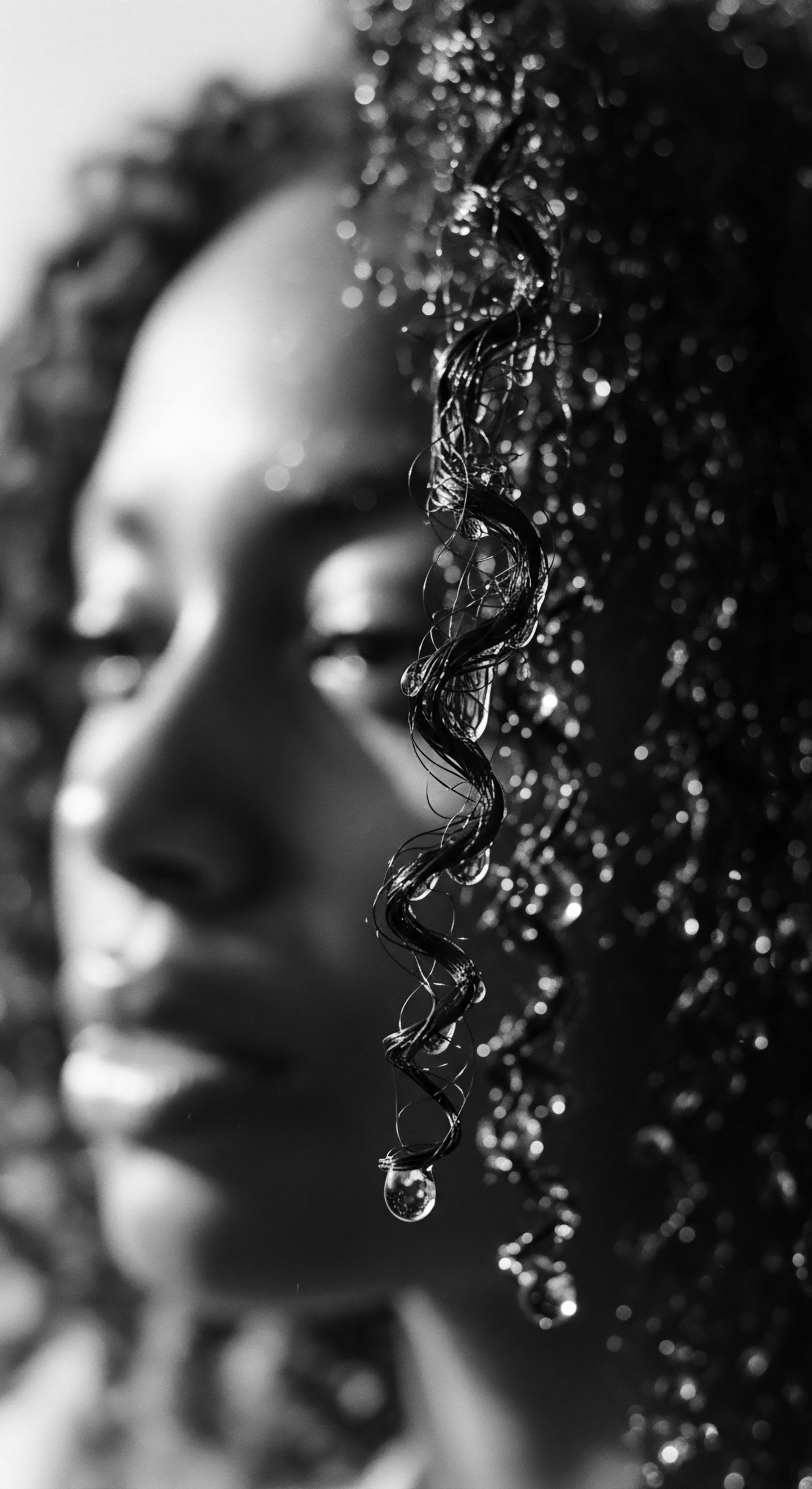
Reflection
To truly understand the scientific components in shea butter that shield textured hair from environmental elements is to walk a path deeply etched with heritage . This is not merely a chemical analysis; it is a profound meditation on the enduring wisdom of those who came before us. The fatty acids, the intricate unsaponifiable lipids, the vitamins, and antioxidants are not recent discoveries to communities who have harvested and utilized shea for millennia. They are the molecular validation of an empirical knowledge, honed over generations, that intuited shea butter’s profound capacity to guard and nourish.
The journey from the shea tree in the West African savannah to the conscious choices we make for our textured hair today forms a continuum, a living, breathing archive of care. The environmental elements our ancestors faced—the relentless sun, the dry winds, the particulate dust—are echoed in the challenges many textured hair individuals still confront. Yet, the timeless remedy, this ‘women’s gold,’ persists. Its scientific properties confirm what was long known through practice ❉ shea butter builds a resilient barrier, quells oxidative stress, and infuses each strand with flexibility, allowing our hair, our very identity, to stand strong and proud.
In every application of shea butter, whether in a complex traditional style or a simple protective twist, there is a whisper of ancestral hands, a celebration of resilience. The ‘Soul of a Strand’ ethos reminds us that our hair is more than fiber; it is a repository of stories, a canvas for expression, and a connection to an unbroken lineage. As we embrace the scientific understanding of shea butter, we simultaneously honor its sacred past, reinforcing that genuine care for textured hair is always a dialogue between the wisdom of heritage and the clarity of discovery, ensuring our crowns remain unbound and vibrant, truly echoes from the source.
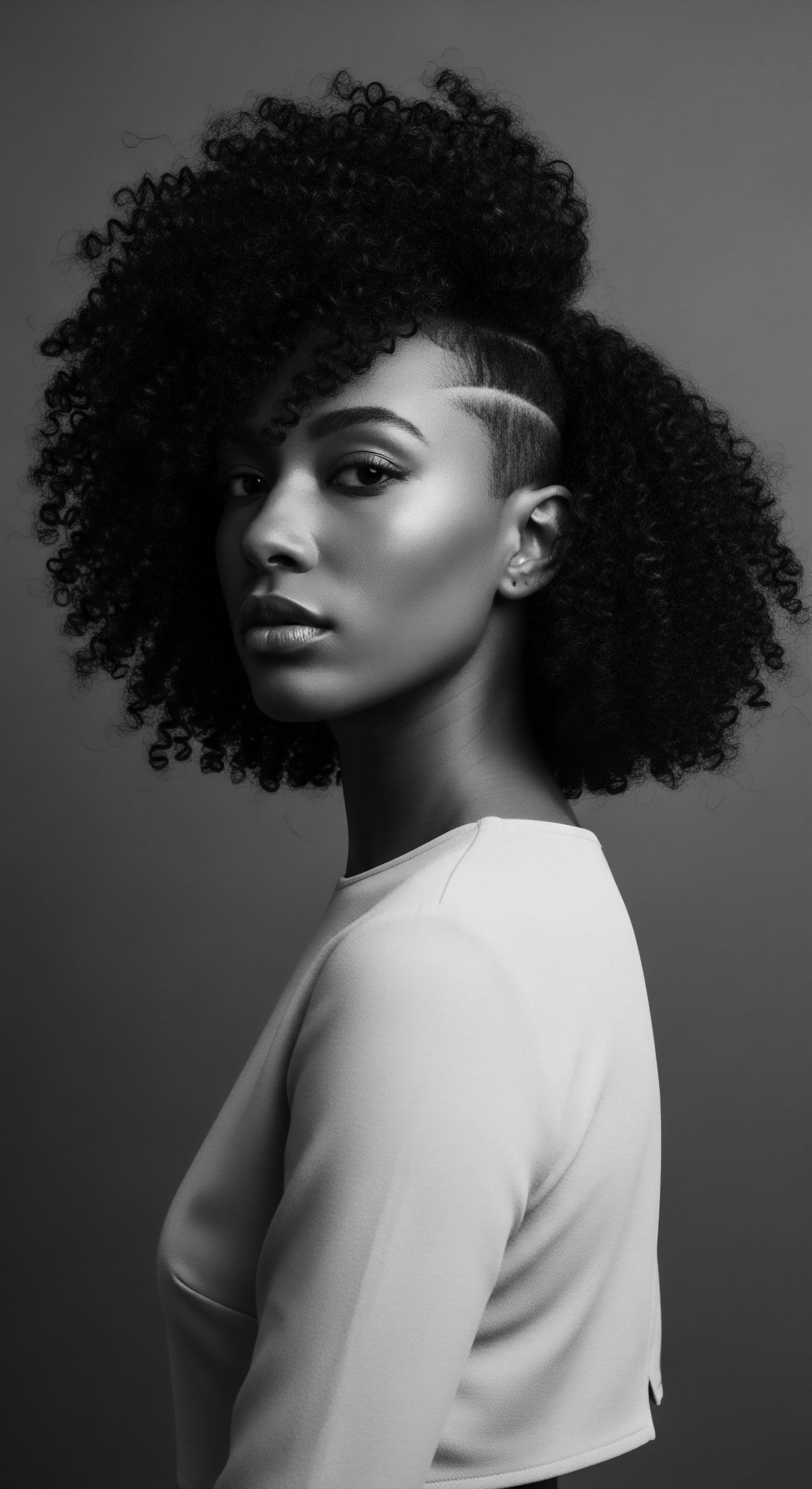
References
- Gallagher, D. D’Andrea, A. C. & Logan, J. (2016). Archaeological Evidence for Early Shea Butter Production in Burkina Faso. Journal of Ethnobiology, 36(1), 16-32.
- Ostad, A. & Goldbach, H. (2024). Here’s Why You Should Be Using Shea Butter for Hair and Skin, According to Beauty Experts. Real Simple.
- King, D. E. (2018). The Benefits of Shea Butter on Skin. Journal of Cosmetic Dermatology, 17(5), 903-909.
- Neil, J. (2021). Shea Butter. Neil Naturopathic Journal.
- Mohiuddin, A. K. (2019). Skin care creams ❉ formulation and use. Dermatol Clin Res, 5(1).
- Sharaibi, O. J. Oluwa, O. K. Omolokun, K. T. Ogbe, A. A. Adebayo, O. A. (2024). Cosmetic Ethnobotany Used by Tribal Women in Epe Communities of Lagos State, Nigeria. Journal of Complementary Medicine & Alternative Healthcare, 12(4), 555845.
- Gallagher, D. & D’Andrea, A. C. (2023). The Archaeology of Shea Butter. Current Anthropology, 64(4), 497-518.
